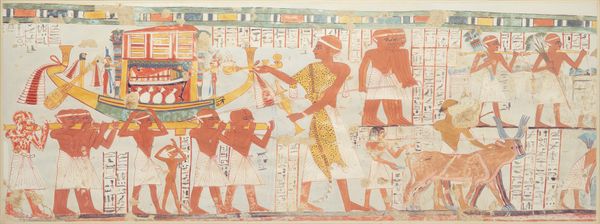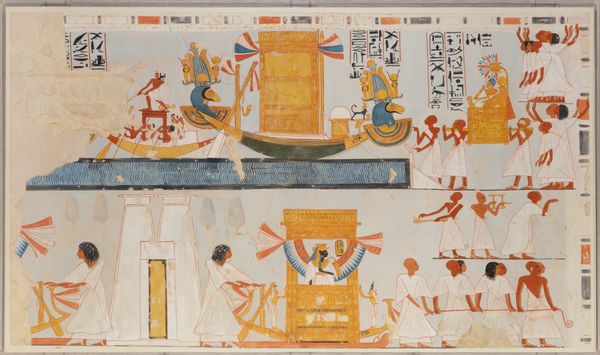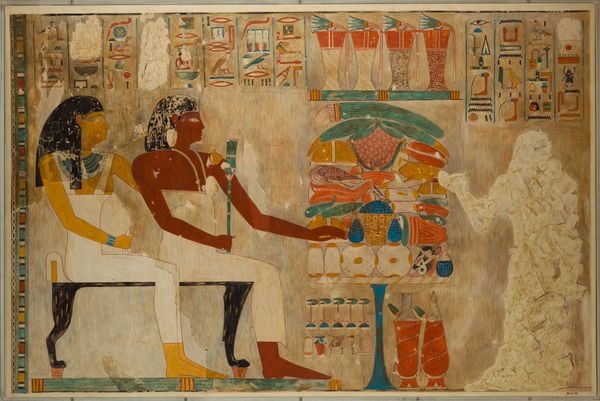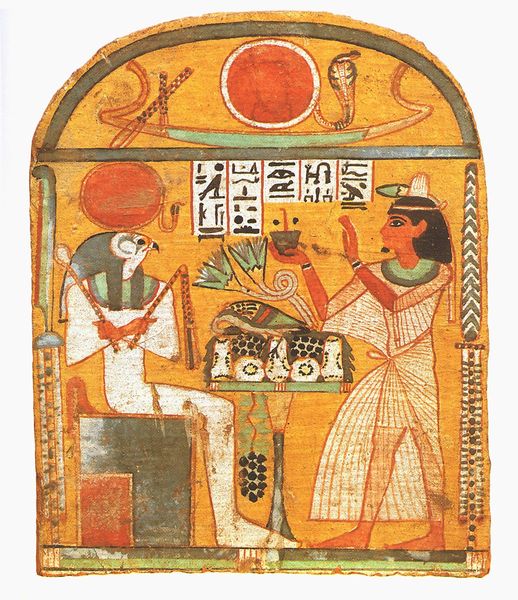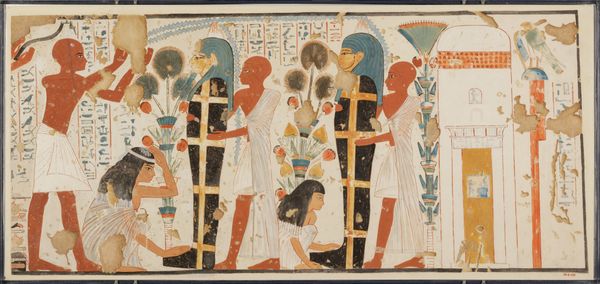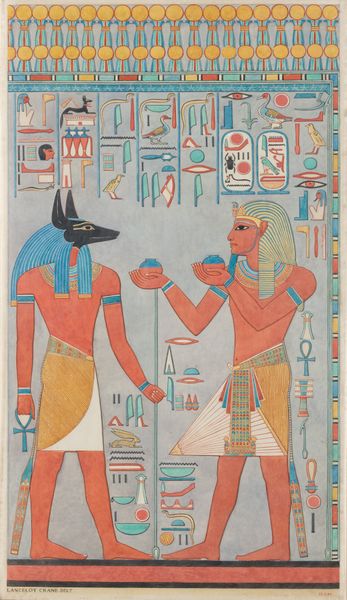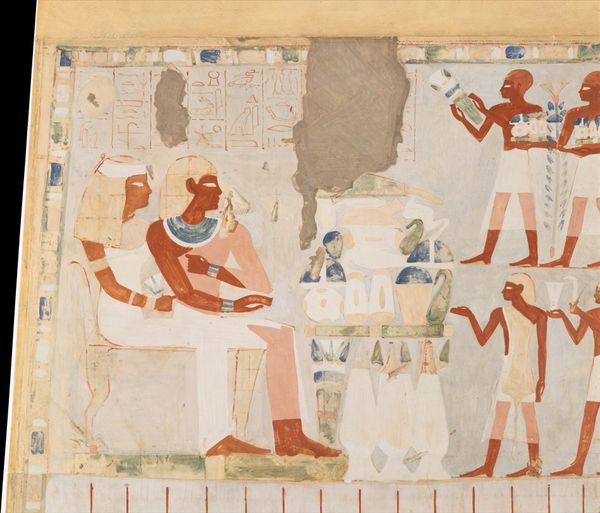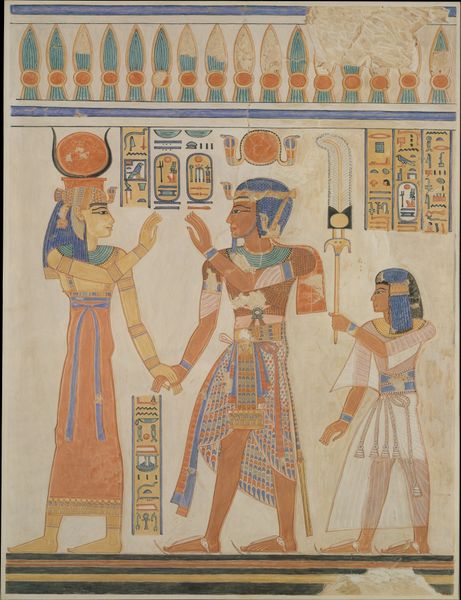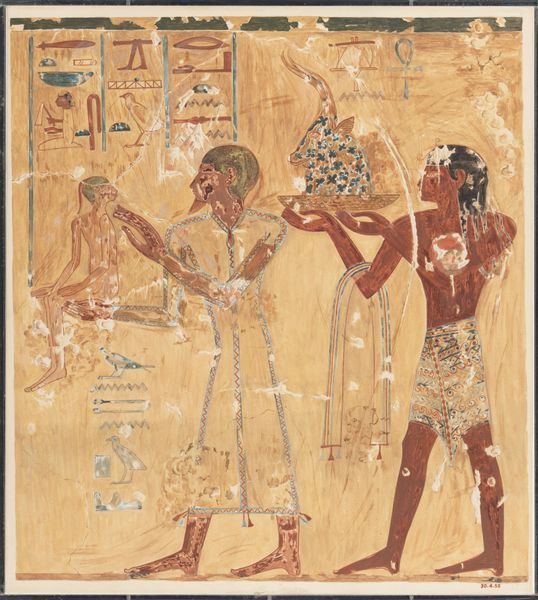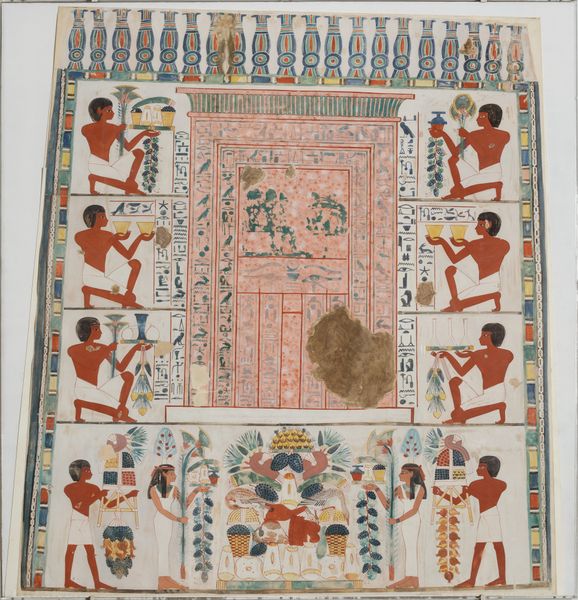
#
portrait
#
ancient-egyptian-art
#
figuration
#
geometric
#
ancient-mediterranean
#
history-painting
Copyright: Public domain
Curator: This wall painting, titled "Amenhotep III and His Mother, Mutemwia, in a Kiosk," dates back to approximately 1353 BC. Editor: It strikes me immediately as powerfully geometric, yet strangely intimate. The rigid lines contrast sharply with the quiet tenderness of the figures. Curator: Indeed. Egyptian art from this period served specific functions within their culture and royal ideology. Such images affirmed power, legitimizing Amenhotep III's rule through his divine connection and lineage. Editor: This raises questions about how such artwork impacted the social landscape of ancient Egypt, with depictions that reinforce notions of social hierarchy. How accessible would art like this be, given the general population at the time? Curator: Largely, these paintings existed in contexts only accessible to the elite, reinforcing ideas of both religious and political power. It underscores how images helped construct Amenhotep's authority. Editor: Seeing Mutemwia behind him—it seems to soften that harsh picture of authority, portraying a dynastic image but through familial bonds. Is this maternal depiction unique in any sense for pharaohs, and is her role to reify Amenhotep's legitimacy and solidify matrilineal inheritance rights? Curator: Depictions like this helped construct the idea of a divinely sanctioned lineage and political continuity; depictions like this helped reinforce that connection. This work showcases a deliberate projection of stability and divine right. Editor: Viewing this piece from the lens of today, it provokes critical inquiry on constructed histories and their socio-political use to shape norms—both in the past and the present. Curator: Understanding how these images shaped ancient Egyptian society gives us vital insight into their social structures and the role visual culture played in perpetuating power. Editor: It allows for meaningful commentary of visual art and their interplay between societal structure and contemporary thought. Thank you.
Comments
No comments
Be the first to comment and join the conversation on the ultimate creative platform.
